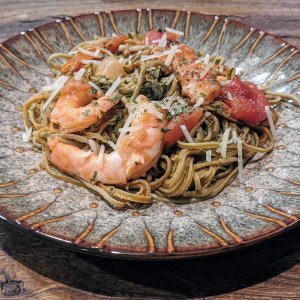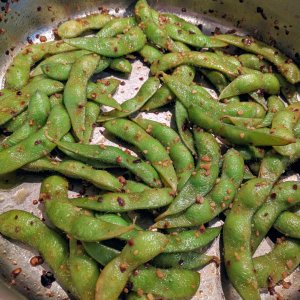edamame
-

Edamame noodles, tomato sauce, vegetables, and ricotta cheese
Edamame (soybeans) were first cultivated in China some 7000 years ago, while the earliest documented reference to the term "edamame" dates from the year 1275, when the Japanese monk Nichiren wrote a note thanking a parishioner for the gift of "edamame" he had left at the temple.- cheryl
- Media item
- edamame noodles
- Comments: 0
- Category: Food & Drinks
-

Edamame noodles
Edamame and other preparations of soybeans are rich in protein, dietary fiber, and micronutrients, particularly folate, manganese, phosphorus and vitamin K. The balance of fatty acids in 100 grams of edamame is 361 mg of omega-3 fatty acids to 1794 mg of omega-6 fatty acids.- cheryl
- Media item
- edamame edamame noodles edamame pasta
- Comments: 0
- Category: Food & Drinks
-

Homecooked edamame
Edamame can come in two forms: pods or beans. Edamame beans are easy to eat and can be cooked just like any other type of beans. The edamame pods require a different process to eat. The pod should be placed in the mouth and using your teeth slide the edamame beans in your mouth.- cheryl
- Media item
- edamame homecooked homecooking
- Comments: 0
- Category: Food & Drinks
-

Edamame
Edamame is a preparation of immature soybeans in the pod, found in cuisines with origins in East Asia. The pods are boiled or steamed and may be served with salt or other condiments. The pod should be placed in the mouth and using your teeth slide the edamame beans in your mouth.- cheryl
- Media item
- beans edamame
- Comments: 0
- Category: Food & Drinks
